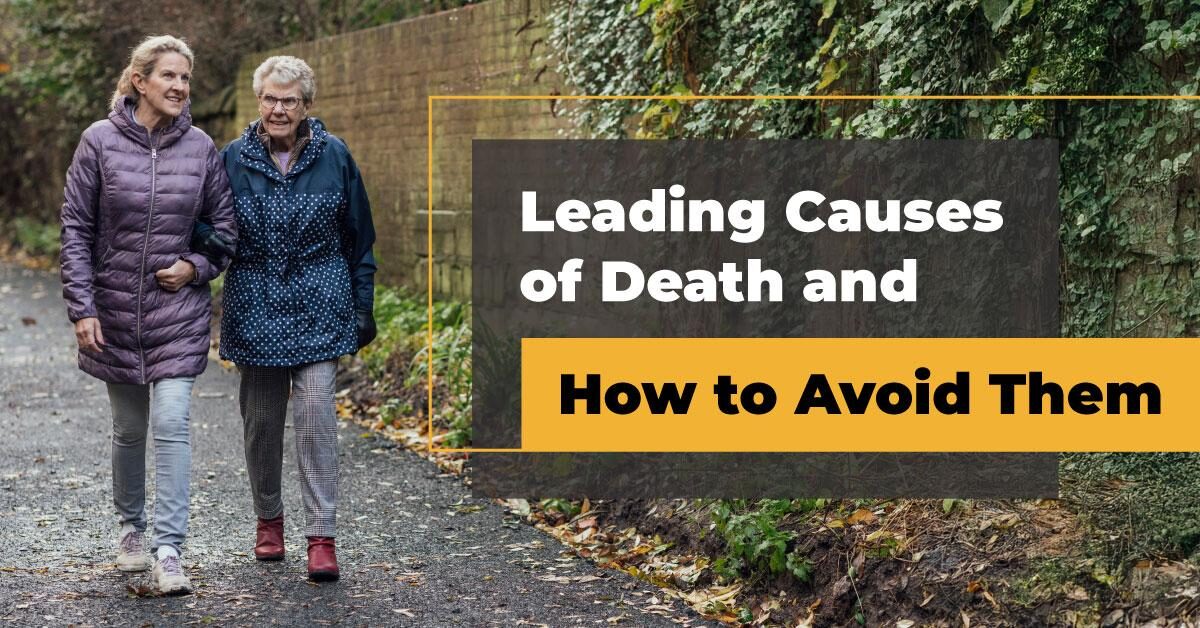While it’s impossible to escape death because every living organism on the planet—including humans—will eventually die, there are steps we can take to prevent untimely deaths caused by accidents and prevention tips that can help us and our loved ones mitigate the occurrence of diseases in order for us to enjoy a long and healthy life.
To that end, this blog examines the current leading causes of death in the United States and what can be done to protect ourselves from each.
Persistent Trends in Leading Causes of Death
Since 1950, heart disease and cancer have maintained their positions as the two leading causes of death in the United States. Together, these diseases accounted for a significant number of deaths in 2022, with heart disease responsible for 21% and cancer for 19%. While the COVID-19 pandemic briefly disrupted these patterns, placing the virus among the top causes of death, it has since dropped to fourth place.
Overall, the five leading causes of death—heart disease, cancer, accidents, COVID-19, and stroke—made up 58% of all deaths in 2022. Accidents, including motor vehicle crashes and accidental poisonings, accounted for 7% of deaths, underscoring their ongoing impact across people groups.
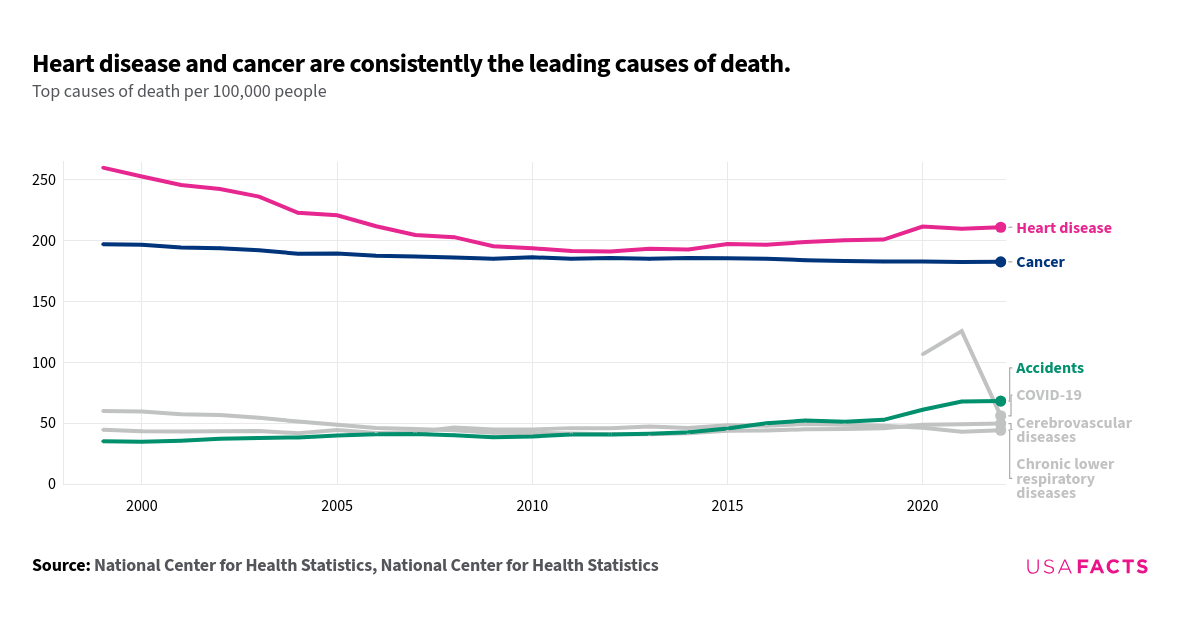
Sign up to get the latest industry news and offers right in your inbox
Leading Causes of Death in the U.S. by Age Group
The stats on causes of death in the U.S. reveal stark differences across age groups, highlighting specific risks and long-standing health concerns for various demographics.
- Children (Ages 1–17): Preventable Accidents Dominate
- For children, accidents were the predominant cause of death, with motor vehicle crashes leading at 15%. Other unintentional injuries, including accidental poisonings, contributed significantly. Cancer was the third-leading cause, claiming 9% of young lives, while heart disease, though less common, still ranked among the top causes.
- This data underscores the importance of safety measures, such as seatbelt use and childproofing homes, to protect this vulnerable population.
- Young Adults (Ages 18–44): The Danger of Poisonings and Accidents
- In adults aged 18 to 44, accidental poisonings emerged as the most frequent cause of death, responsible for 25% of fatalities. These incidents often involve drug overdoses, reflecting the ongoing opioid crisis. Motor vehicle accidents and heart disease followed, with cancer also appearing prominently.
- Public health campaigns targeting substance misuse and promoting safer driving practices could mitigate these preventable deaths.
- Middle-Aged Adults (Ages 45–64): Chronic Diseases Take Center Stage
- Cancer and heart disease dominate this age group, accounting for 23% and 20% of deaths, respectively. Accidental poisoning remains a concern, but its impact is smaller compared to younger adults.
- These findings highlight the need for preventive care, including regular health screenings and lifestyle interventions, to reduce the burden of chronic disease in this population.
- Seniors (Ages 65+): Chronic Illness as the Primary Threat
- Among those 65 and older, heart disease and cancer are the most significant causes of death, responsible for 23% and 19%, respectively. Other accidents contribute minimally, and causes such as accidental poisonings and motor vehicle crashes are virtually absent in this age group.
- The data supports the importance of managing chronic conditions and promoting healthy aging strategies to improve quality of life for seniors.
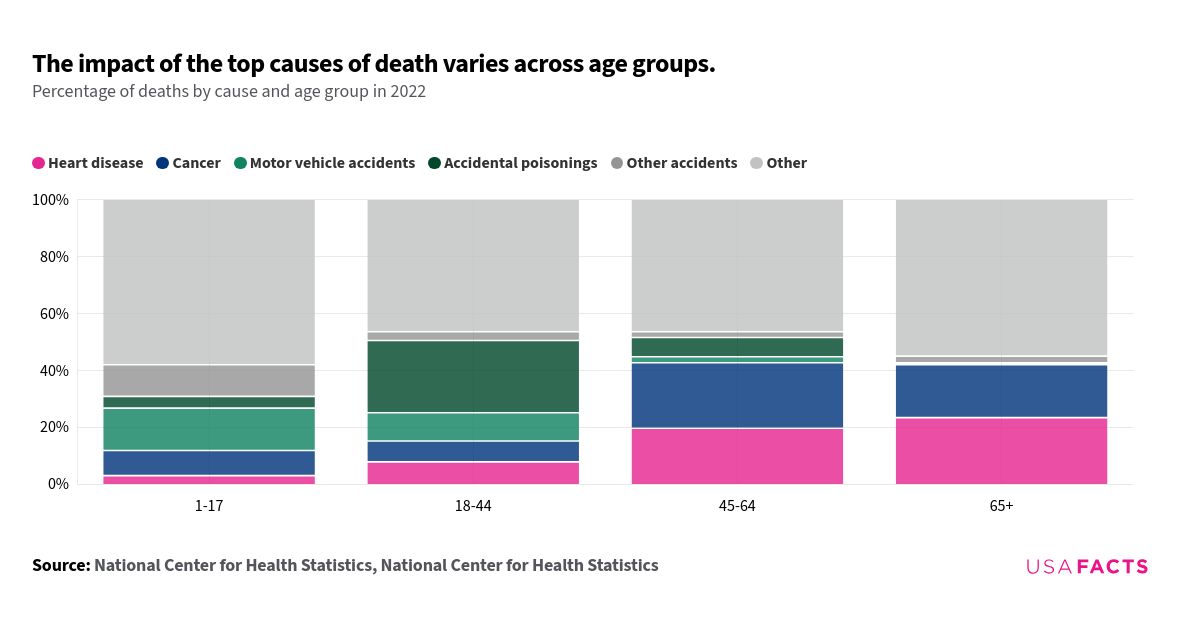
All of the aforementioned statistics offer valuable insights for understanding mortality trends and guiding public health efforts. Preventive measures tailored to specific risks, such as accident prevention for youth and chronic disease management for older adults, are crucial for improving health outcomes.
Addressing these challenges requires coordinated efforts across public health, healthcare, and community initiatives. Understanding these trends empowers individuals and communities to make informed decisions, fostering a healthier future for all.
Five Essential Health and Safety Tips to Protect Against Heart Disease, Cancer, Accidents, and Stroke
In today’s fast-paced world, staying proactive about your health is crucial to avoiding preventable conditions. Heart disease, cancer, accidents, and stroke are among the leading causes of death globally, but adopting specific health and safety strategies can significantly reduce your risk. Here are five essential tips to help you safeguard your well-being.
1. Prioritize Regular Health Screenings: Routine health check-ups are critical in the early detection of conditions like heart disease and cancer. Blood pressure tests, cholesterol checks, mammograms, colonoscopies, and heart scans can reveal warning signs before symptoms arise.
For strokes, identifying and managing risk factors such as high blood pressure and atrial fibrillation through regular screening can prevent major complications. Staying informed about your health metrics allows you to make timely decisions about your lifestyle and medical care.
When it comes to recognizing the symptoms of a stroke and getting help to reduce potential health hazards, time is of the essence—so BE FAST.
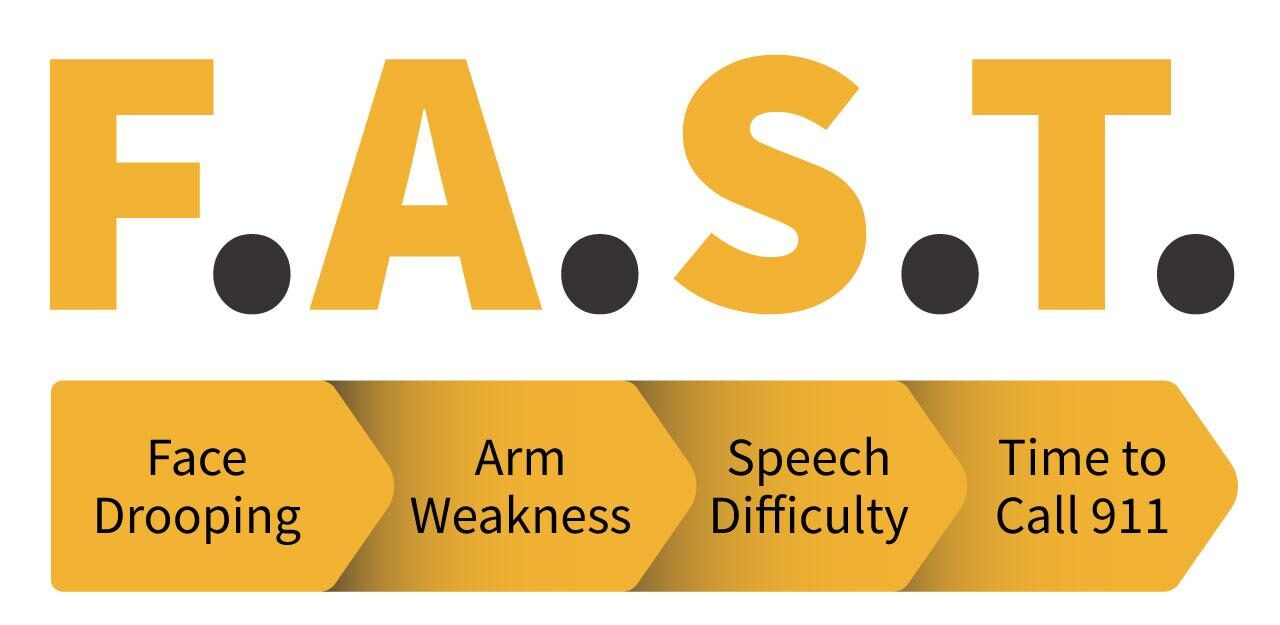
2. Adopt a Heart-Healthy Diet: What you eat directly impacts your heart and overall health. A diet rich in fruits, vegetables, lean proteins, whole grains, and healthy fats can lower your risk of heart disease, stroke, and certain types of cancer.
Limit processed foods, added sugars, and saturated fats, which can contribute to obesity, high cholesterol, and elevated blood pressure. Consider incorporating antioxidant-rich foods like berries and leafy greens to help fight cellular damage linked to cancer.
3. Exercise Regularly and Maintain a Healthy Weight: Physical activity strengthens your cardiovascular system, improves circulation, and reduces your risk of obesity—a significant factor in heart disease, stroke, and some cancers.
Aim for at least 150 minutes of moderate aerobic activity or 75 minutes of vigorous activity weekly, paired with strength-training exercises. Maintaining a healthy weight further reduces your risk of developing chronic diseases and enhances your overall safety by improving balance and reducing the likelihood of accidental injuries.
4. Practice Safety in Everyday Activities: Accidental injuries can happen anywhere, but simple precautions can significantly reduce risks. Always wear seat belts while driving, use helmets during biking or sports, and ensure proper lighting in and around your home to prevent falls.
Additionally, avoid distractions like texting while walking or driving, and adhere to workplace safety protocols. These small steps can prevent accidents that may result in serious injuries or long-term health issues.
5. Manage Stress and Prioritize Mental Health: Chronic stress is a silent contributor to heart disease and stroke, as it can elevate blood pressure and lead to unhealthy habits like overeating or smoking. Moreover, stress is linked to weakened immunity, which may increase the risk of cancer.
Incorporate stress-management techniques such as mindfulness, meditation, yoga, or deep-breathing exercises into your daily routine. Seeking support from friends, family, or professionals can also help you navigate life’s challenges more effectively.
How Can Champion Help Safeguard Your Health?
Proactively taking care of your health is the best defense against life-threatening conditions. By adopting these safety tips—regular screenings, a heart-healthy diet, consistent exercise, accident prevention, and stress management—you’ll be well on your way to a healthier, safer future.
Remember, small daily choices can have a big impact on your long-term health. Make these tips part of your routine and encourage others to do the same—it could save lives.
While Champion can’t help alleviate accidents on the road or in the house, their medical seating products can certainly create a safer healthcare environment for patients and their caregivers.
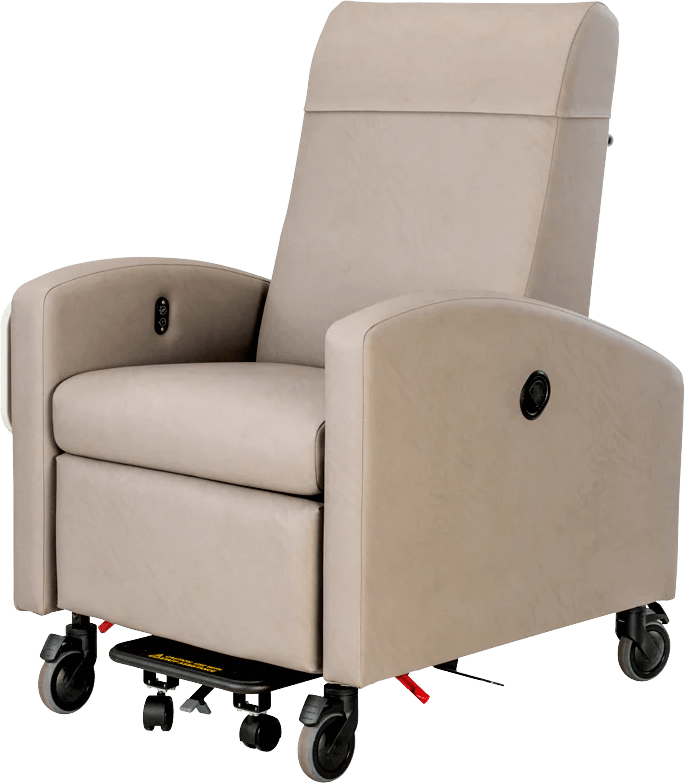
Superbly crafted with a suite of intuitive, practical, and durable innovations to address patient and clinician comfort, the Inverness from Champion is an exceptional recliner that provides safety, comfort, utility, and flexibility for multiple treatment applications.
To view Champion’s complete portfolio of products, browse our digital catalog. Then, request a quote for your facility.
